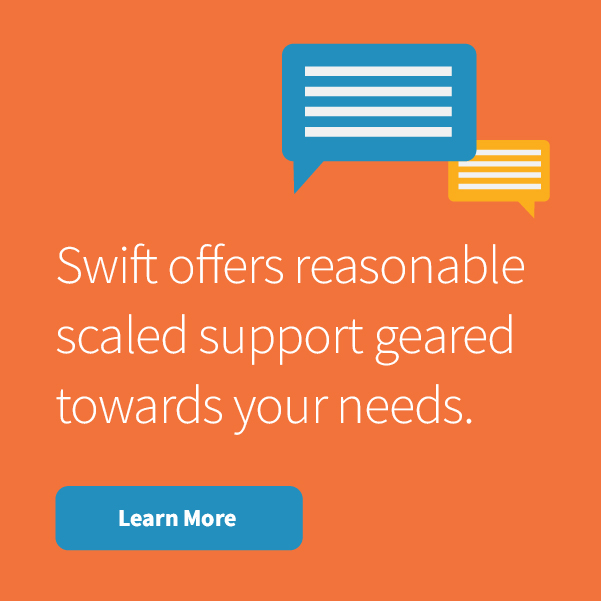Money talks — and more often than ever, it texts. SMS remains one of the most direct, reliable and high-impact communication channels for businesses today. Whether you're sending a promotional message, a security code or a payment reminder, message delivery can make or break the interaction.
There is no denying the popularity of text messaging. Almost all consumers — 91%, to be exact — welcome brand messages. And it's obvious that this channel isn't going anywhere, since the SMS advertising industry is expected to expand significantly each year.
Yet, despite the wide-open opportunity, plenty of businesses are still missing the mark. Not because of complex roadblocks, but because of small, solvable problems that quietly undermine their success. This guide peels back the curtain on SMS delivery. We'll discuss what it is, why it matters and how you can tighten the bolts on your strategy to get better results and build stronger customer relationships.
Understanding SMS Delivery and Why It Matters
SMS delivery is all about whether your text message actually makes it to the person you're trying to reach, or at least to their mobile network. It might sound like a small technical detail, but it's an important one. A lot of people assume that once a message is "sent," it's already in the recipient's hands. But that's not quite how it works. "Sent" just means your system passed it along. "Delivered" means it landed where it was supposed to. And that difference can mean everything when the message is urgent or time-sensitive.
Why does delivery matter?
This distinction is vital because a non-delivered message equals a lost opportunity. Whether it's a security code that fails to authenticate a login or a promotional message that never reaches a customer's inbox, failed delivery damages trust and business outcomes.
A high delivery rate leads to higher open rates, better engagement and measurable conversions. This is particularly crucial in financial services, retail, healthcare and any industry that relies on SMS marketing, transaction alerts or SMS reminders. And when done right, SMS delivers results. In fact, 96% of marketers say SMS marketing drives revenue.
In short, deliverability operates behind the scenes, but it plays a starring role in performance.
What Impacts SMS Delivery Rates?
Even with a strong strategy, not every SMS message gets through. Below are the most common culprits behind delivery failure and why understanding each can improve your success rate.
1. Spam filters and content violations
Mobile carriers use advanced spam filters to protect consumers. These systems automatically flag messages that contain overly promotional language, suspicious links (especially from URL shorteners) or formatting issues like all caps and excessive punctuation. For example, a message reading "WIN BIG $$$!!!" might be blocked instantly.
Additionally, unregistered traffic, particularly over 10DLC or short codes, can be flagged as non-compliant, even if the content itself is harmless. Using an approved and verified SMS campaign setup can mitigate this.
2. Outdated or invalid phone numbers
Over time, people change phone numbers and lists become stale. Sending messages to disconnected lines or inactive numbers increases bounce rates and may impact your sender reputation with carriers. Worse, messages sent to recycled numbers can violate regulations if consent is not re-established.
List validation services or built-in number hygiene tools from your SMS platform can help avoid this trap.
3. Gray routes vs. direct carrier connections
Not all routes are created equal. "Gray routes" are informal message paths used to cut costs, often exploiting international telecom gaps. They can result in poor SMS deliverability, message delays and even total delivery failure without explanation.
A direct-to-carrier SMS gateway offers faster, more secure routing with visibility and guaranteed delivery receipts. It's the enterprise-grade route for any business that values reliability.
4. International challenges
Global SMS delivery adds another layer of complexity. Every country has its own set of telecom rules — some require pre-registration of sender IDs, while others block messages in certain formats or languages.
Localization also matters. Failing to support local alphabets or sending non-relevant content across borders can reduce delivery rates and engagement.
5. Device-side issues
Sometimes the message never reaches the device due to user-side limitations. These include full inboxes, roaming restrictions or Do Not Disturb (DND) settings. While you can't control these variables, tracking delivery status trends across message types and audiences can help mitigate the issue.
6. Message type and throughput
Different channels offer different speeds and capacities:
- 10DLC: Good for A2P messaging in the U.S., but requires registration.
- Short codes: Excellent for high-volume campaigns, but more expensive.
- Toll-free numbers: Suitable for support messages but less ideal for rapid-fire SMS marketing.
Choosing the right option for your message type and volume helps keep your SMS delivery rate high. If the setup isn't right, messages may get delayed or filtered.
How to Calculate and Track SMS Delivery Rates
You can't improve what you don't measure. And with SMS, understanding delivery goes far beyond just seeing "sent" on your dashboard.
Formula: SMS Delivery Rate = Delivered Messages / Sent Messages
But what's "delivered"? Here's a quick breakdown of statuses:
- Delivered: Confirmed by the carrier or the recipient's device
- Sent: Dispatched to the mobile network
- Expired: Couldn't be delivered within the allotted time window
- Undelivered/Failed: Blocked or bounced back
- Rejected: Carrier refused to process the message
Delivery reports (DLRs)
An SMS delivery report provides key insights for every sent message:
- Status code
- Timestamp
- Message ID
- Recipient
- Error codes (if failed)
You can use these reports to:
- Trim your list of invalid phone numbers
- Spot poor-performing message types
- Identify delivery issues by region or device
Platforms like Swift SMS Gateway provide real-time reporting, delivery status tracking and actionable analytics to fine-tune your strategy.
6 Proven Ways to Improve Your SMS Deliverability
1. Register campaigns and sender IDs
Especially under the U.S. 10DLC framework, unregistered traffic is increasingly being filtered or throttled. Registering campaigns helps avoid SMS delivery failure and builds long-term SMS deliverability consistency.
2. Avoid spammy language and formatting
Avoid all-caps, overuse of exclamation marks and phrases like "WIN NOW" or "LIMITED TIME." Keep message content clear, relevant and compliant with carrier guidelines. Use branded short links when needed.
3. Send at optimal times
Peak hours depend on your audience. For example, healthcare clients may respond best early in the morning, while retail customers engage more on weekends. Use data to determine when your text messaging performs best.
4. Clean and validate lists regularly
A clean list is essential. Use validation tools to remove duplicate, expired or blocked numbers. Doing this before every SMS marketing campaign can increase your delivery rate and cut unnecessary costs.
5. Personalize your messaging
Personalized messages receive higher open rates and fewer opt-outs. Use names, transaction history or geo-targeted info to create more relevant SMS notifications.
6. Partner with a direct SMS provider
A reliable provider like Swift SMS Gateway offers:
- Direct-to-carrier message delivery
- Proven track record of high sms delivery rate
- Flexible sms API options
- Tools for delivery report management
Start your free trial here
SMS Delivery in Global and Industry-Specific Use Cases
Different industries demand different things from SMS messaging, but they all rely on one constant: reliable delivery.
High-compliance sectors
Industries like healthcare, finance, insurance and legal are heavily regulated. They use SMS for:
- Authentication (OTP SMS)
- Real-time security alerts
- Policy updates
- Two-way customer support
With Swift SMS Gateway, organizations can ensure compliance with HIPAA, TCPA and PIPEDA while maintaining secure and auditable message records.
Retail & ecommerce
From cart abandonment reminders to shipping confirmations, retailers depend on fast and successful text message delivery to close sales and increase lifetime value.
Cross-border messaging
Delivering international SMS notifications requires knowledge of local regulations, infrastructure and even character encoding. It's complex, but critical for global brands.
Swift SMS Gateway's support team and tiered SLA-backed plans make navigating these waters easier
and safer.
FAQ
What is SMS delivery rate and how is it calculated?
Delivered messages divided by total sent messages.
What causes SMS to fail?
Invalid numbers, carrier filters, grey routes, expired delivery windows or blocked messages.
How do I avoid spam filters?
Register your sender ID, avoid shady content and follow formatting guidelines.
Does timing matter?
Absolutely. Off-hours can lead to lower delivery or missed attention spans.
Can personalization help?
Yes — engaged customers are less likely to block or opt out.
What should I look for in delivery reports?
Look for trends in failure, filter triggers or regional performance drops.
What's the difference between delivered, sent and rejected?
Delivered = success, Sent = carrier accepted, Rejected = blocked before delivery.
Make Every Message Count with Swift SMS Gateway
SMS delivery is mission-critical, whether you're sending promotional offers, transaction alerts or urgent authentication codes. Your business depends on messages being seen — and seen fast.
With Swift SMS Gateway, you get:
- Direct-to-carrier routing for high sms deliverability
- Real-time analytics and delivery reports
- Seamless sms API integration
- Support plans tailored for startups and enterprises alike
Want to ensure every message reaches its destination? Start your free trial here.


